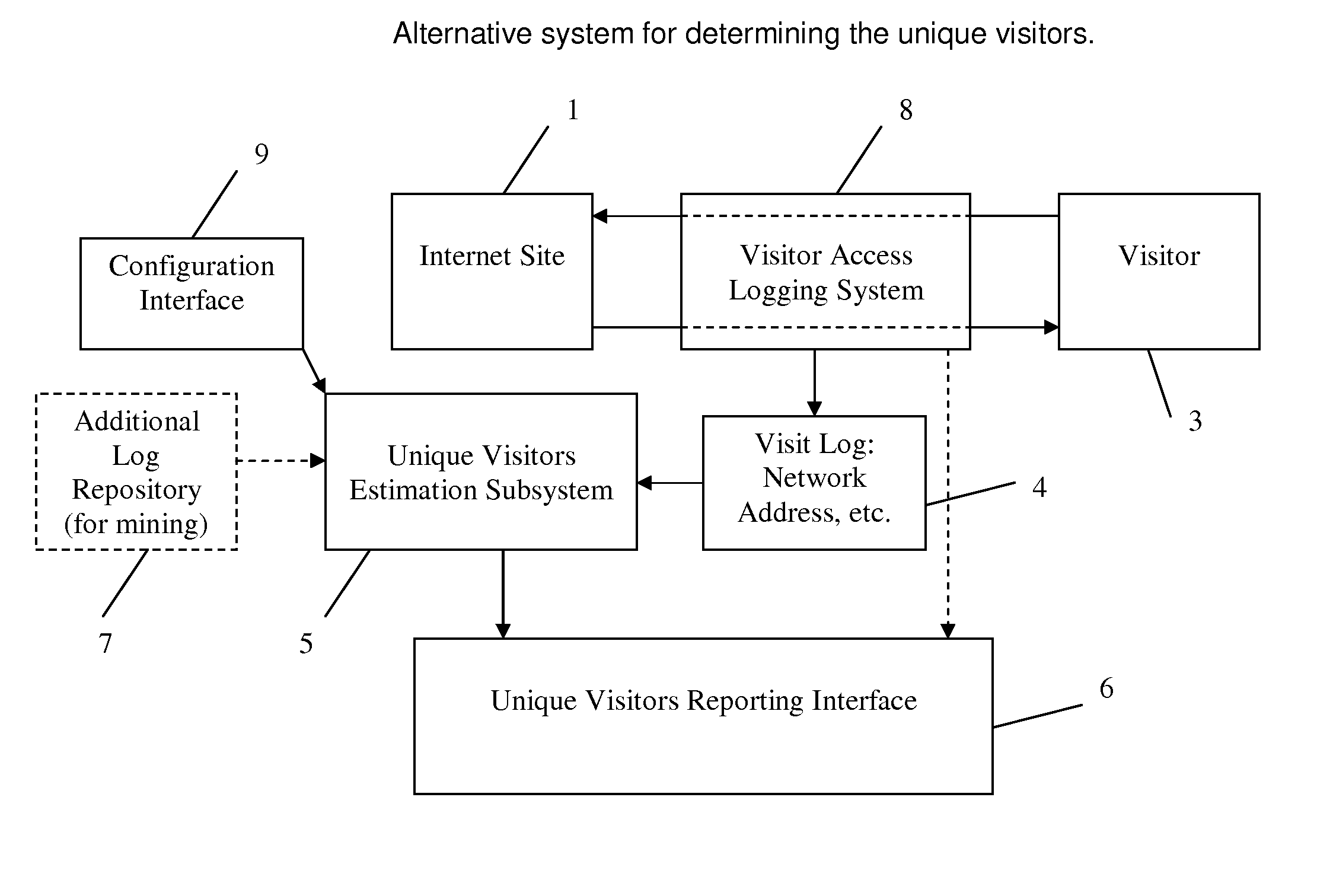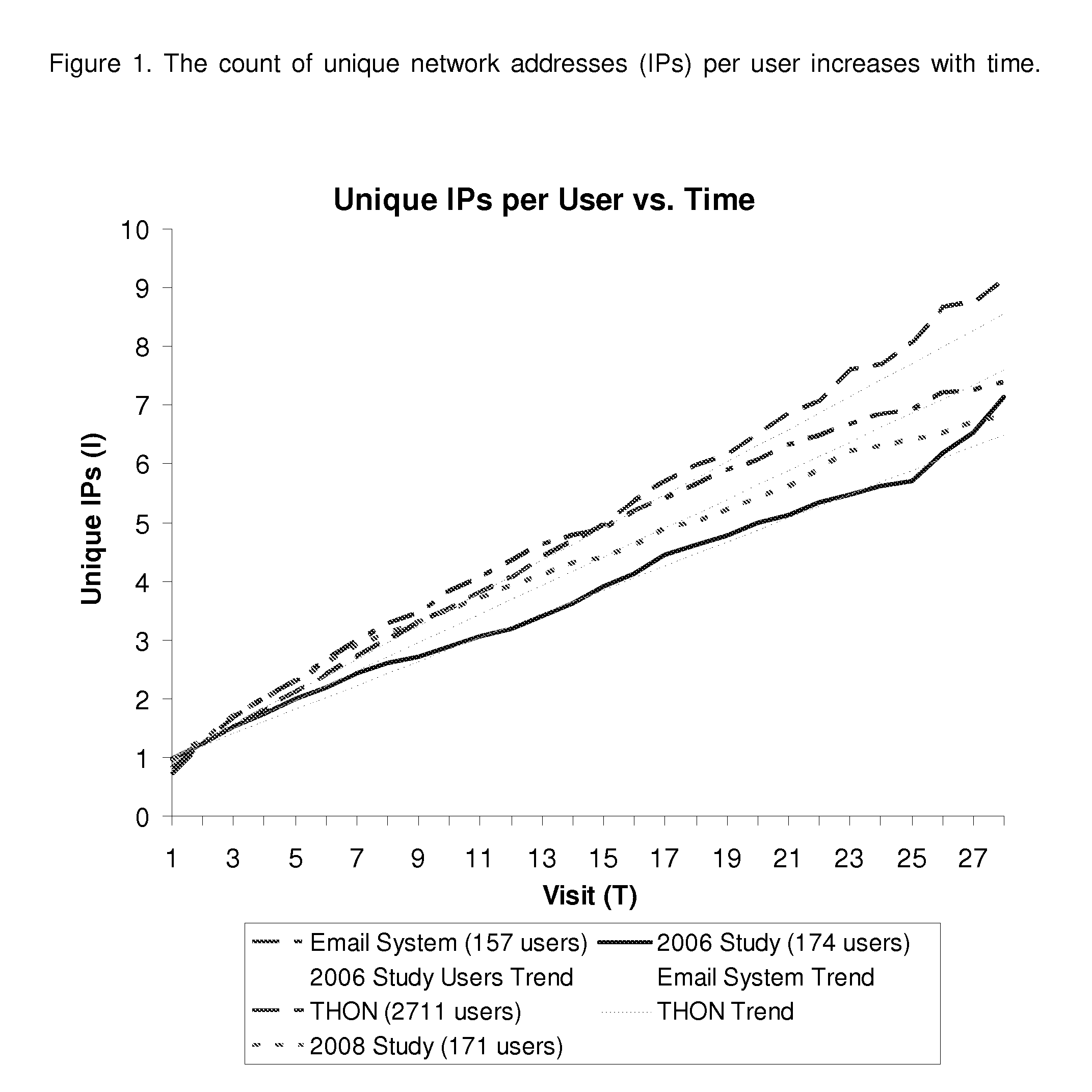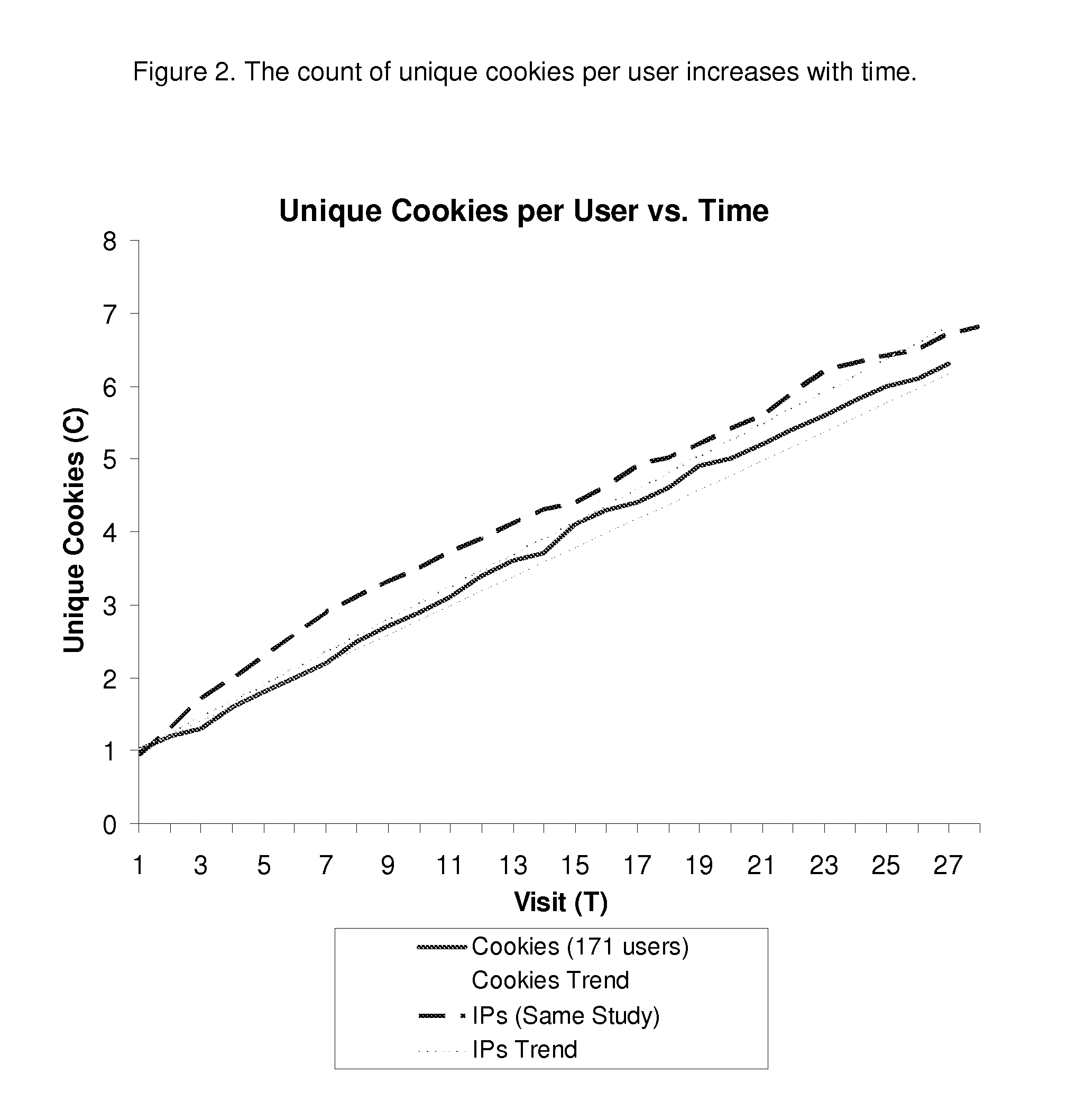Method and System for Estimating Unique Visitors for Internet Sites
a technology for internet sites and unique visitors, applied in the field of internet marketing, can solve the problems of inability to apply the same methods for new-media advertising (such as internet advertising), inability to deliver internet advertising in general to subscribers, and almost impossible to achieve expensive and tedious call-out marketing. achieve the effect of simple and easy implementation
- Summary
- Abstract
- Description
- Claims
- Application Information
AI Technical Summary
Benefits of technology
Problems solved by technology
Method used
Image
Examples
Embodiment Construction
[0032]Contrary to the currently accepted notion both unique network address and unique cookie counts taken at face value provide a poor measure of unique visitors. The research conducted by the author based on the analysis of web site traffic logs [6] revealed persistent overestimation of unique visitors that grows linearly with time when unique network addressed (e.g. IP addresses) are used as a measure of unique visitors—FIG. 1.
[0033]The count of unique cookies—which is considered to be a more reliable measure than the count of unique addresses and a de-facto industry standard for determining the unique visitors—also grows linearly with sampling time—FIG. 2.
[0034]From this analysis the formulas for calculating the unique visitors U from the unique network address / unique cookie counts were derived—FIG. 3.
[0035]These new, surprising and highly unobvious findings were analyzed by the author and a novel method for estimating the unique visitors was developed, which is illustrated on F...
PUM
 Login to View More
Login to View More Abstract
Description
Claims
Application Information
 Login to View More
Login to View More - R&D
- Intellectual Property
- Life Sciences
- Materials
- Tech Scout
- Unparalleled Data Quality
- Higher Quality Content
- 60% Fewer Hallucinations
Browse by: Latest US Patents, China's latest patents, Technical Efficacy Thesaurus, Application Domain, Technology Topic, Popular Technical Reports.
© 2025 PatSnap. All rights reserved.Legal|Privacy policy|Modern Slavery Act Transparency Statement|Sitemap|About US| Contact US: help@patsnap.com



